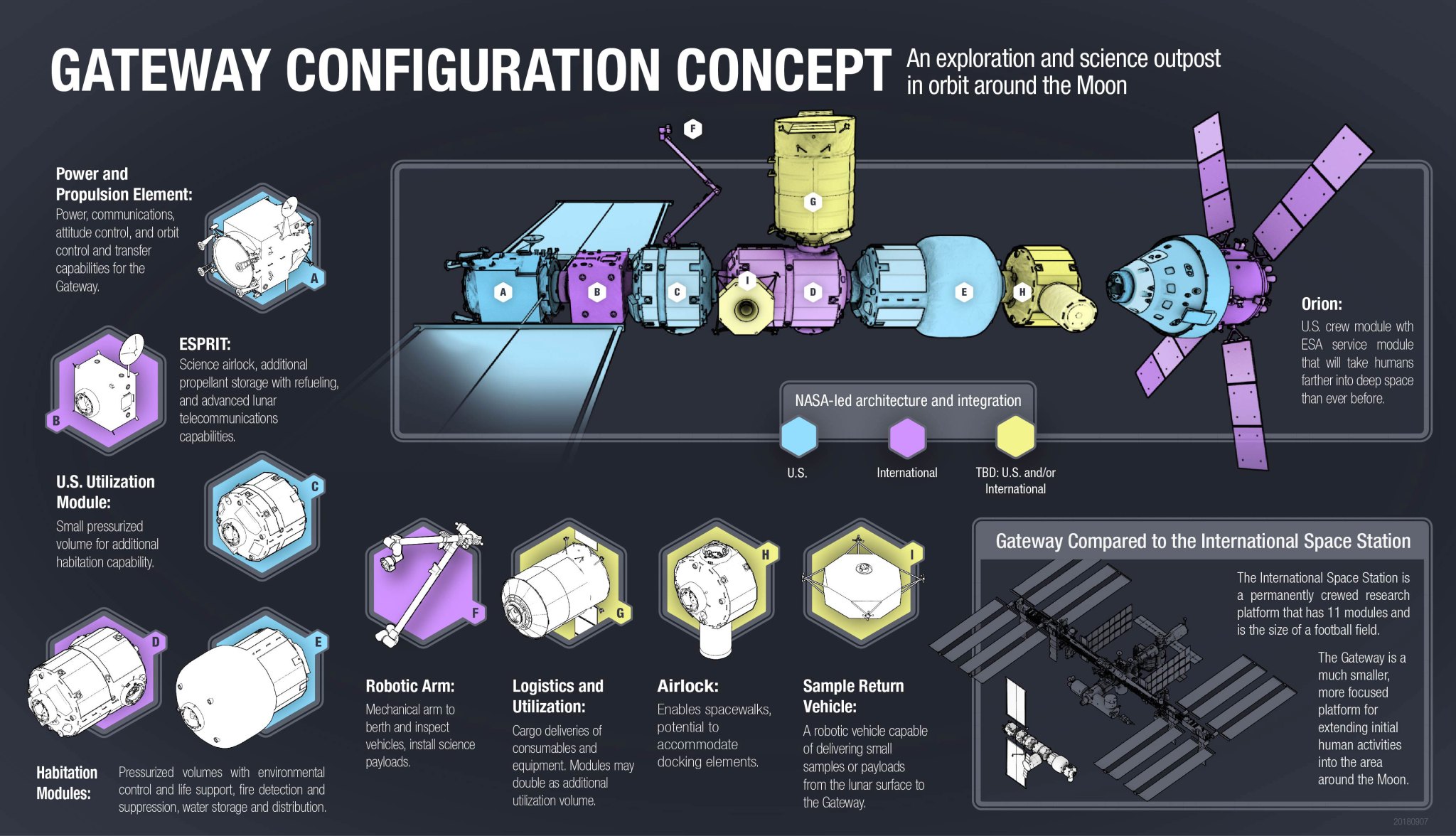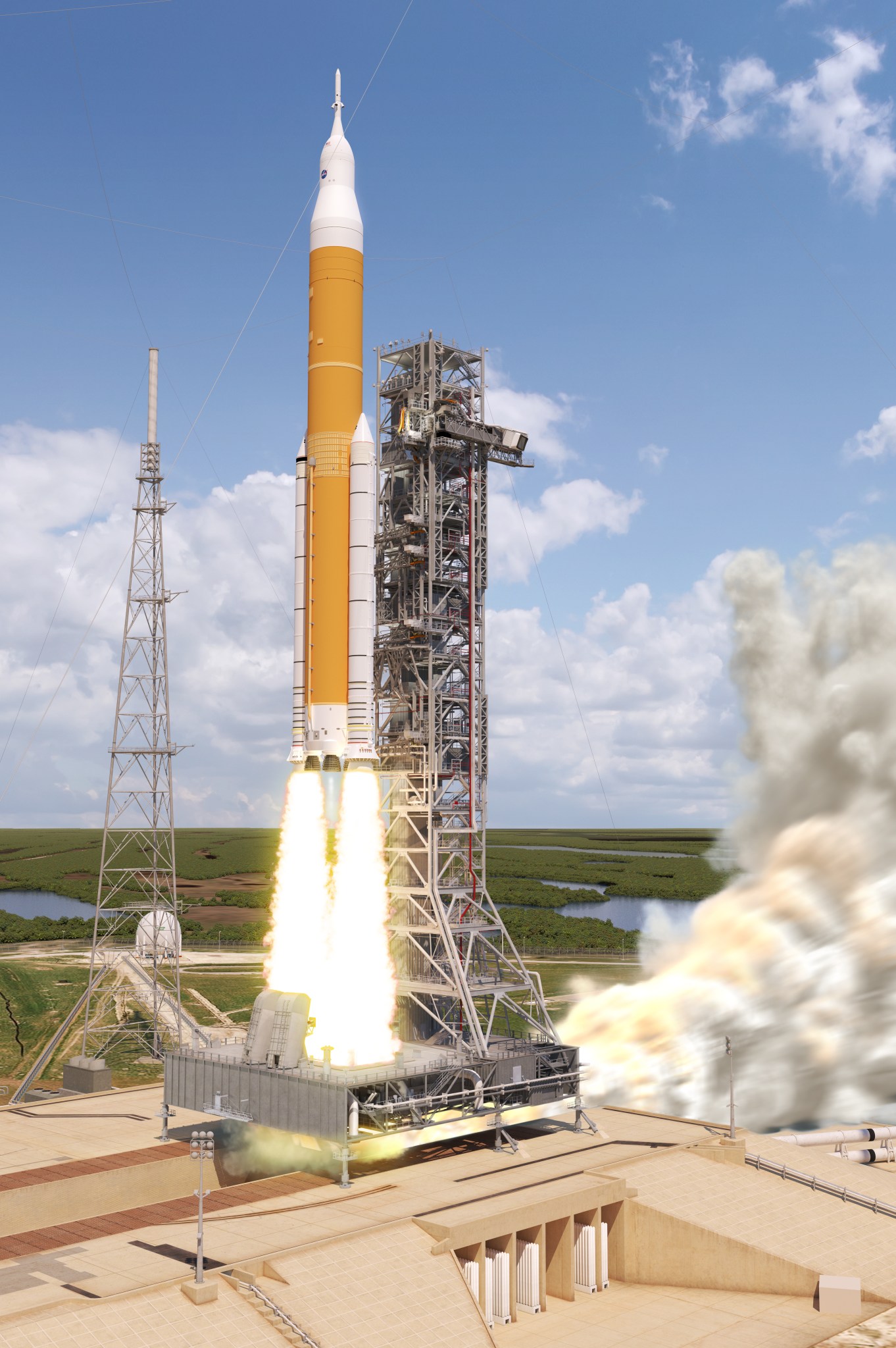1. NASA’s really building a spaceship?!

That’s right! NASA is working with its partners to design and develop a small spaceship that will orbit the Moon called the Gateway. This spaceship will be a temporary home and office for astronauts, just about a five-day, 250,000-mile commute from Earth.
The Gateway will have living quarters, laboratories for science and research, docking ports (like doors) for visiting spacecraft, and more. It will provide NASA and its partners access to more of the lunar surface than ever before, supporting both human and robotic missions.
The Gateway will be our home base for astronaut expeditions on the Moon, and future human missions to Mars. Even before our first trip to Mars, astronauts will use the Gateway to train for life far away from Earth, and we will use it to practice moving a spaceship in different orbits in deep space.
2. So, is it a new space station, just around the Moon?
Sort of. Astronauts will visit the Gateway at least once per year, but they won’t stay year-round like crew aboard the International Space Station. The Gateway is much smaller, too. Its interior is about the size of a studio apartment (whereas the space station is larger than a six-bedroom house). Once docked, astronauts can live and work aboard the spaceship for up to three months at a time, conduct science experiments, and take trips to the surface of the Moon.
Even without crew present, cutting-edge robotics and computers will operate experiments inside and outside the spaceship, automatically returning data back to Earth.
3. But why the Gateway? Why not just go straight to the Moon?
We want the Gateway to be a new place for human exploration and the world’s best science and technology. At the International Astronautical Congress in October 2018 in Bremen, Germany, NASA received overwhelmingly positive feedback from the international space community that the spaceship is important to expanding human presence deeper into the solar system, including to the Moon and Mars.
NASA is looking at options for astronauts to shuttle between the Gateway and the Moon on reusable landers. Just like an airport here, spacecraft bound for the lunar surface or for Mars can use the Gateway to refuel or replace parts, and resupply things like food and oxygen without going home first. For months-long crew expeditions to the Gateway, this could allow multiple trips down to the lunar surface, and exploration of new locations across the Moon.
4. Okay, so how does one build a spaceship in deep space?
NASA plans to build the Gateway with just five or six rocket launches (compared to the 34 launches it took to build the space station). The agency’s powerful Space Launch System and Orion are key to the overall assembly and operations, and we are partnering with U.S. companies and international space agencies to build it within the next decade.
We will send up large parts of the Gateway on multiple rockets for automatic assembly in space. Some parts may be sent on private rockets, but NASA’s SLS rocket will deliver most. Orion will push them the hundreds of thousands of miles to Gateway.
NASA will work with U.S. companies to build a small living and working area for the Gateway called a habitation module. The addition will leverage years of research and demonstrations under the Next Space Technologies for Exploration Partnerships. Discussions are also ongoing with international partners to provide expanded living space, advanced robotics, transportation, and science capabilities.
We are also working with experts around the globe to develop standards that will make it possible for anyone to create an experiment or spacecraft parts that will operate seamlessly aboard the state-of-the-art lunar outpost.
Most recently, the agency kicked off discussions on how to send supplies to the Gateway, and is seeking input from U.S. companies to deliver cargo, equipment and other goods like food to the orbiting spaceship.
5. What kind of research will be possible with the Gateway?
Talking with scientists and engineers, NASA believes the Gateway will be the key to a new era of lunar exploration – both in orbit and on the surface of the Moon. One the most unique things about the Gateway is NASA can move it to other orbits around the Moon to do more science in new locations.
The agency wants to use the Gateway as a science platform to look back at the Earth, observe the Sun, and get unobstructed views of the vast universe. By studying the geology of the Earth, the Moon, and Mars – the three planetary bodies we know the most about – and the ways in which they are similar and different from each other, we can learn important things about how planets and planetary systems form.
6. This all sounds good, but when will the Gateway be ready?
NASA has already started working on the Gateway! The first major part will provide power and propulsion for the spaceship, and is targeted to launch on a private rocket in 2022. After it reaches orbit, and test-drives its power and communications, NASA will launch four astronauts on an SLS and Orion mission carrying two new sections that will add a small living space and initial science and operational capabilities.
Each year after that, astronauts will travel to the Gateway with new parts until it is fully assembled, currently targeted for 2026.




























